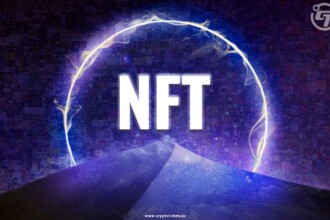As institutional investors continue to enter the volatile world of cryptocurrencies, implementing robust security measures has become more crucial than ever.
With billions of dollars pouring into Bitcoin, Ethereum, and other digital assets, crypto exchanges and custodial services have become prime targets for hackers.
From the landmark Mt.Gox breach in 2014 that saw 850,000 bitcoins stolen to the collapse of FTX, the crypto landscape is rife with security risks. Thus, there is a need for security measures for institutional investors.
In this article, we will explore the regulatory landscape, security challenges and future trends and technologies that might help mitigate against crypto institutional security issues.
Let’s dive in.
Regulatory Landscape for Institutional Investors
Lately, there have been uncertainties surrounding cryptocurrencies, which pose challenges for institutional investors seeking to navigate this emerging asset class.
While crypto regulation is still in its early stages, there have been growing calls for greater oversight and governance from agencies like the SEC in order to protect investors as well as ensure fair and efficient markets.
Regulatory clarity is slowly emerging in areas such as crypto custody solutions, stablecoins, investment mandates, tokenized securities, and crypto derivatives, but many significant gaps remain at both state and federal levels.
As global regulatory frameworks develop further, institutional players would greatly benefit from meticulous monitoring of new regulations, compliance protocols, and cross-border differences in legislation, as well as a deep commitment to satisfying existing KYC/AML and accredited investor requirements.
Security Challenges in the Crypto Market
In the realm of crypto institutional trading, security threats such as exchange hacks and wallet compromises are particularly alarming, given the high volumes of trade and the sophisticated nature of institutional participants.
Billions have been lost over the past decade to various crypto breaches, illuminating the nascent nature of security infrastructure in the space.
One persistent issue is the irreversibility of most cryptocurrency transactions, which lack recourse in cases of theft or fraud. The pseudonymous and decentralized qualities that define cryptocurrencies also unfortunately benefit bad actors.
Additionally, the complexity of cryptographic principles and software codes that underpin blockchain ecosystems implies elevated cyber risks even without human oversight. Once assets are compromised, there is often no way to claw them back.
For example, while FTX is one of the biggest crypto crime stories that still makes a good headline, the Mt.Gox breach in 2014 is another story that still rings a bell.
According to blockchain security firm Certik, November 2023 has seen a worrying spike in crypto hacks and thefts, with losses reaching approximately $173 million so far. This figure represents the fourth-highest monthly total for 2023.
The biggest hack was the theft of over $60 million worth of assets from the Poloniex exchange, where hackers managed to compromise the exchange’s hot wallet.
While this indicates that exchanges and CeFi platforms have been prime targets for hackers as they facilitate the central custody and transfer of billions in crypto assets, decentralized ecosystems built on DeFi protocols and smart contracts are also increasingly being exploited by flash loan attacks, governance manipulation, and other activities that drain liquidity pools or trigger flash crashes in asset prices.
Best Practices for Security
Experts broadly recommend adopting both hardware and software solutions for strengthening cryptographic systems and processes involved in the custody and transfer of virtual currencies.
On the hardware side, investors should leverage ‘cold’ storage mechanisms like air-gapped offline signature devices for safeguarding private keys. Multi-signature authorization requiring multiple sign-offs before the movement of funds, also adds another layer of security. Hardware security modules with tamper-proof builds prevent physical access to sensitive cryptographic data.
Also Read: Multisig Wallet: The Future of Secure Crypto Transactions
On the software side, utilization of decentralized exchange protocols, decentralized VPNs, anti-phishing measures, and whitelisting procedures during transactions is advised. Rigorous implementation of KYC/AML protocols enables greater transparency regarding transaction sources while avoiding VC trafficking risks.
For smart contract-based systems, formal verification solutions can mathematically prove code accuracy while ongoing auditing spot bugs. Backup solutions should be in place as well for potential blockchain rollbacks following exploits.
Overall, a defence-in-depth approach spanning personnel, technology, and processes allows investors to benefit from the crypto upside while accounting for the space’s unique vulnerabilities.
Insurance and Risk Management
With institutional investors frequently facing substantial risks, many of these financial risks can be addressed through robust risk mitigation and insurance coverage.
So how exactly can funds, banks, and other institutional participants keep their virtual asset holdings protected?
Essentially, two parallel approaches are advised: The first is purchasing dedicated insurance policies that provide some asset protection guarantees in cases of theft or fraud losses. For this, services like those from Lloyd’s in London allow institutions to take custody-specific cover or “crime” insurance on cryptocurrency holdings.
The policies usually have caps on claim amounts but compensate for cases of hacks, insider fraud, or physical robbery. Premium costs depend on factors like storage types and security practices followed by the institution.
Additionally, certain cryptocurrency exchanges and custodial providers also offer proprietary insurance on holdings stored with them, with pre-set limits. The key benefit of such coverage is the direct replacement of lost coins/tokens in full without needing to liquidate any insurance payouts into fiat currency. This allows seamless continuation of crypto investing/trading activities despite adversity.
Institutional Security Protocols
Apart from third-party insurance, institutional investors must establish resilient in-house security and accounting mechanisms around wallets, transactions, coin storage, etc.
This includes internal audits, hardware safeguards, access controls, and adopting cryptocurrency-specific protections like multi-party computation. Such protocols can preemptively reduce the probability of security issues. Documentation between teams and external providers also helps resolve responsibilities and liabilities transparently in the event of losses.
Collaboration with Security Experts
Given the highly complex and rapidly evolving nature of cryptographic systems, collaboration with specialized security service providers offers institutional investors a critical line of defense for their digital asset holdings.
By partnering with vetted crypto-native security firms, investors can integrate advanced solutions around private key custody, access management, wallet security, DDoS protection, penetration testing and incident response.
Security partners equipped with blockchain forensic skills and experience battling threats like dusting attacks, walletsetMaximal extractable value (MEV) manipulation, etc. can offer valuable insights. Consulting on protocols like multi-party computation, zero-knowledge proofs and trusted execution environments further allows funds to minimize risks across their crypto operations.
Even protocol developers focused on formally verifying smart contract codes offer useful alliances. Besides technology protections, collaborating with crypto compliance experts in legal/regulatory advisory and AML screening optimizes oversight. Such associations can allow CISO leadership at institutional funds to supplement their internal expertise.
As decentralization shifts security accountability directly to participants, strategic collaboration is key for investors.
Future Trends and Technologies
As cryptocurrency adoption grows, security innovations tailored to safeguarding digital assets are likely to rapidly evolve. Multiple cutting-edge developments show promise to harden defences for institutional investors specifically.
One area is the use of multi-party computation (MPC) protocols, where private keys are split into segments distributed across different servers or entities to increase attack resistance. Hardware security modules with advanced biometrics, air-gapping and tamper-proofing also minimize single points of failure.
On the storage front, policy-based information rights management enables extensive controls over documents and data access/sharing across teams.
For smart contract risks, formal verification techniques using mathematical proofs can catch errors pre-release while simulation testing spots threats. Additionally, decentralized models for exchanges, identity, DNS, VPN and other services limit disruption via single server failures.
On the operations side, technologies like hardware-enforced access policies, adaptive authentication and surveillance systems powered by AI expand real-time threat monitoring. As breaches and exploits induce learning, a vibrant crypto-security technology landscape promises a more robust crypto-asset defense for institutional capital.
Also Read: Pivotal Role Of Institutional Trading Partners In Crypto Markets
Conclusion:
As blockchain-based digital currencies entice more institutional capital, it is vital for funds, banks and trust companies to implement adequate security measures tailored to the unique risks in this nascent space.
Solutions spanning custody, storage, transactions, smart contract interactions and encryption management are essential given that blockchain’s irreversible and decentralized qualities currently favour criminals over victims.
While the complete elimination of cyber threats may not be realistic, the prudent selection of external security partners along with in-house protocols allows investors to reap crypto investment upside with minimized risk exposure. The crypto security arena is witnessing rapid improvements, but institutional participants must yet exercise caution, vigilance and reliance on experts to navigate persistent threats from black hat hackers.
As the maxim goes – “better safe than crypto-sorry” in this blockchain-based brave new world under construction.







